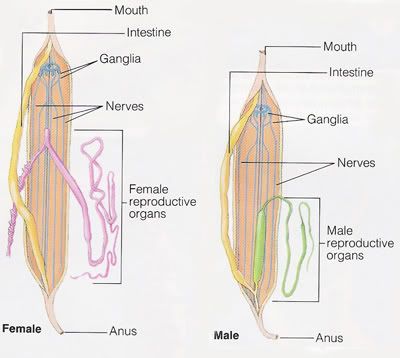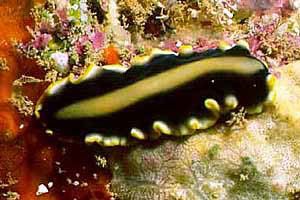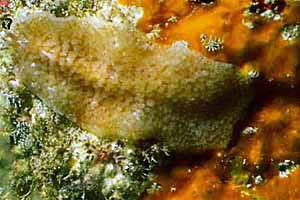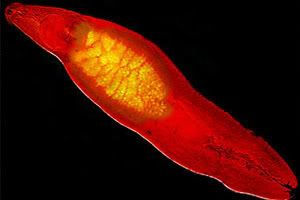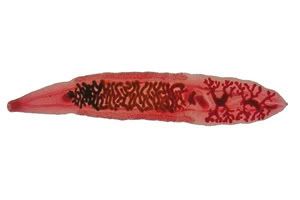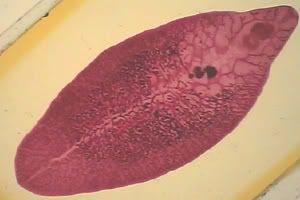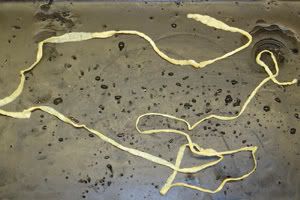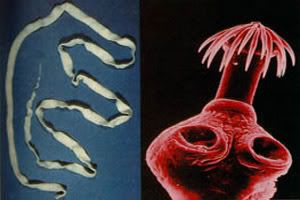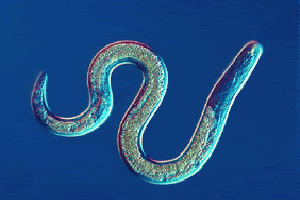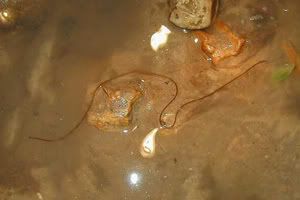Thursday, February 22, 2007
Defining Characteristics
Unsegmented worms are worms whose bodies are not divided into special sections by internal partitions.
Tuesday, February 20, 2007
Introduction

They are consisted of two phyla of wormlike animals: phylum Platyhelminthes (flatworms) and phylum Nematoda (roundworms).
The members of the phylum Platyhelminthes (platy means flat and helminth means worm) are the simplest animals with bilateral symmetry. Most of them exhibit enough cephalization, or development of the anterior end, to have a head. Flatworms also have more developed organ systems than either sponges or cnidarians.
Members of the phylum Nematoda, are among the simplest animals to have a digestive system with two openings - a mouth and anus. Roundworms range in size from microscopic to a meter in length, and may be the most numerous of all multicelluar animals.
Due to their feeding methods, flatworms are put into three major classes:
Class Turbellaria: free-living flatworms. Most familiar members of this class are planarians, or the “cross-eyed” freshwater worms, they are found in moist tropical areas.
Class Trematoda: parasitic flatworms known as flukes. They can be external or internal parasites and life cycles always involve with at least two different hosts. Pattern of multiple hosts is typical for most parasites.
Class Cestoda: long, flat parasitic worms usually attach themselves to the intestinal walls of the hosts. They have a head called a scolex on which there are several suckers and a ring of hooks.
Lab Photos
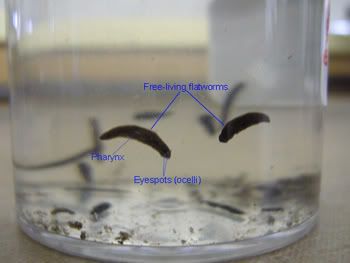
^ Planarians inside a jug of pond water.
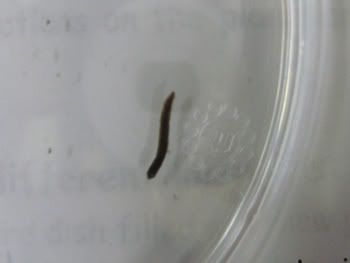
^ Planaria on a Petri Dish.
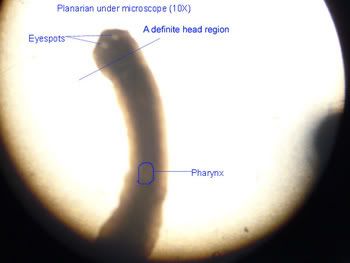
^ Labeled planarian under microscope.

^ An enlarged pharynx of a cut planarian.

^ Planarian in a "thinner" manner (movement). Can you idnetify its body parts?
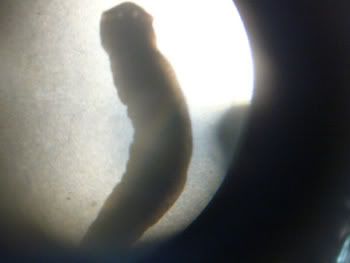
^ Planarian in a "fatter" manner.
Where Do They Live (Habitats)
Aquatically free-living flatworms live in streams, lakes, and oceans. External parasitic flatworms live on the host's skin, mouth, or gills; internally parasitic flatworms live in the organs of the host such as the intestine and liver.
Most roundworms are free-living, and are found in virtually all parts of the Earth - in soil, salt flats, aquatic sediments, polar or tropical regions, and even hot springs. However, some species are parasitic roundworms that live within a particular host.
Most roundworms are free-living, and are found in virtually all parts of the Earth - in soil, salt flats, aquatic sediments, polar or tropical regions, and even hot springs. However, some species are parasitic roundworms that live within a particular host.
Adaptations to Their Environment
Most flatworms live in aquatic environment. Their flat bodies allow them to undergo daily process such as respiration, excretion, internal transport through diffusion. They have organ level of organization, and thus, they are acoelomates, or no true body cavities. Cilia on the ventral side of free-living flatworms aid in movement. Flatworms are heterotrophic, so they do not rely on sunlight and can live in the dark. Some parasitic roundworms lack a nerve system to fit their parasitic nature.
Roundworms can complete respiration, excretion, and internal transport by diffusion as well. Parasitic roundworms produce eggs or zygotes that are immune to harsh environment to fit their complicated lifecycles.
Roundworms can complete respiration, excretion, and internal transport by diffusion as well. Parasitic roundworms produce eggs or zygotes that are immune to harsh environment to fit their complicated lifecycles.
Subscribe to:
Posts (Atom)

